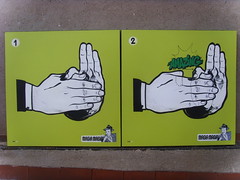Next time I’m on a plane with a child yelling behind me, I’m just going to start yelling too.
Whenever this kind of thing happens I’m always thinking “Hey kid, you’ll have plenty of time to complain as an adult. Right now, this is quiet time. So shush.”
Thing is, we all have social roles. I can’t start yelling in a plane because I’ll get kicked off it, but the child can yell all he wants, because expectations and our roles are different. Any treatment you receive is based on what people see and hear from authorities. The visible matters to them. The rest does not.
Two things become interesting here.
ONE>>> You need a strong social role to be taken seriously. A big part of social engineering involves taking on false authority in order to bypass security measures. If you want to get in the back door and out the side the way the best do in the internet age, you need to do it the same way.
Those that learn to do it go up the ladder fast, because they are doing a form of simplifying complex business models that is based on doing what’s needed to find results, instead of going through the usual bureaucratic maze.
TWO>>> The message must come from a social role they respect. I read a lot about anarchism but the street punks asking for change won’t listen to me because I don’t look like them. If they see my tattoos it might be different. Same with any person– the role must be congruent with what they feel themselves to be or the message isn’t heard.
I don’t think any of this will help me yell in an airplane, but certain parts of it might ensure I don’t get put on any blacklists.
What tricks do you have to subvert this kind of behaviour? Teach me something.

Leave a Reply